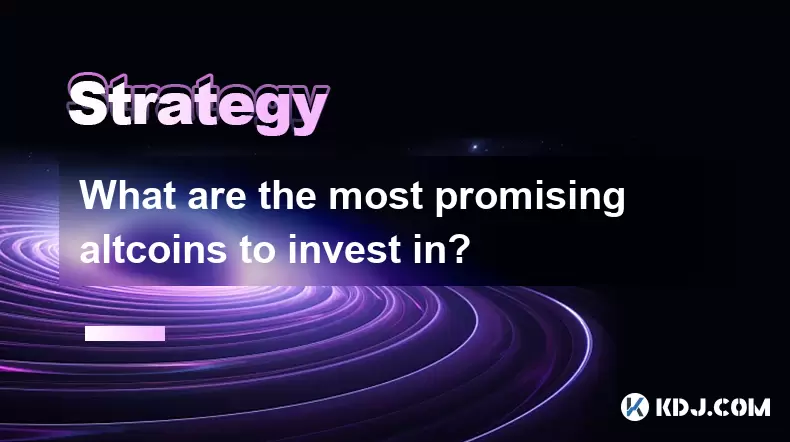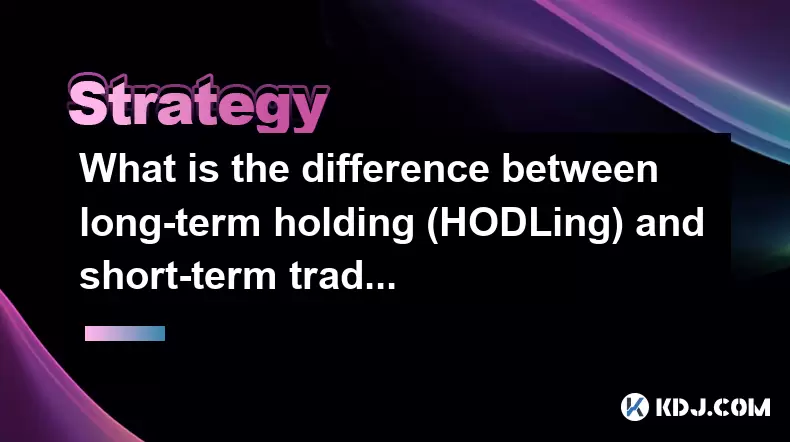-
 Bitcoin
Bitcoin $117800
0.42% -
 Ethereum
Ethereum $4436
0.39% -
 XRP
XRP $3.106
0.86% -
 Tether USDt
Tether USDt $1.001
0.04% -
 BNB
BNB $835.4
1.26% -
 Solana
Solana $188.8
2.21% -
 USDC
USDC $0.9999
0.00% -
 Dogecoin
Dogecoin $0.2302
2.98% -
 TRON
TRON $0.3484
-1.05% -
 Cardano
Cardano $0.9212
-1.20% -
 Hyperliquid
Hyperliquid $46.77
-0.77% -
 Chainlink
Chainlink $22.76
5.64% -
 Stellar
Stellar $0.4278
0.68% -
 Sui
Sui $3.771
2.39% -
 Bitcoin Cash
Bitcoin Cash $583.7
-0.91% -
 Ethena USDe
Ethena USDe $1.001
0.04% -
 Hedera
Hedera $0.2520
2.88% -
 Avalanche
Avalanche $24.28
2.56% -
 Litecoin
Litecoin $120.1
1.44% -
 Toncoin
Toncoin $3.452
1.46% -
 UNUS SED LEO
UNUS SED LEO $9.409
-0.95% -
 Shiba Inu
Shiba Inu $0.00001298
2.02% -
 Uniswap
Uniswap $11.01
3.56% -
 Polkadot
Polkadot $3.962
2.81% -
 Dai
Dai $1.000
0.00% -
 Bitget Token
Bitget Token $4.639
1.16% -
 Cronos
Cronos $0.1511
-0.06% -
 Ethena
Ethena $0.7254
2.87% -
 Monero
Monero $255.7
7.41% -
 Pepe
Pepe $0.00001101
2.80%
Is it worthwhile to buy coins as an investment?
To evaluate the investment potential of crypto coins, delve into project research, assess token utility, study market trends, and identify top-tier coins, innovative altcoins, and undervalued gems.
Jan 12, 2025 at 04:53 am

Key Points:
- Understanding the Cryptocurrency Market
- Evaluating Investment Potential
- Identifying Promising Coins
- Managing Risk and Volatility
- Long-Term Investment Strategies
Is It Worthwhile to Buy Coins as an Investment?
The cryptocurrency market has emerged as a promising investment avenue, attracting both seasoned traders and novice investors alike. However, navigating this complex landscape requires a thorough understanding of key factors and a disciplined approach. This comprehensive guide will delve into the intricacies of investing in cryptocurrency coins, helping you make informed decisions and maximize your potential returns.
Understanding the Cryptocurrency Market
- Decentralization and Blockchain Technology: Cryptocurrencies are decentralized digital currencies that leverage blockchain technology to facilitate secure, transparent, and trustless transactions. Unlike traditional fiat currencies, cryptocurrencies are not controlled by central banks or governments.
- Market Volatility: The cryptocurrency market is known for its high volatility, driven by factors such as news events, technological advancements, and market sentiment. This volatility can lead to significant price fluctuations, both upward and downward.
- Regulatory Environment: The regulatory landscape surrounding cryptocurrencies is constantly evolving, with different countries and jurisdictions adopting varying levels of regulation. Understanding the regulatory environment in your region is crucial before investing.
Evaluating Investment Potential
- Research and Due Diligence: Before investing in any cryptocurrency, it is essential to conduct thorough research and due diligence. Analyze the project's whitepaper, team background, roadmap, and community engagement.
- Understanding the Token's Utility: Evaluate the inherent value and utility of the token within the project's ecosystem. Tokens with clear use cases and a strong development team tend to have better long-term prospects.
- Market Analysis: Study historical price data, trading volume, and market trends to gain insights into the coin's price dynamics. Technical analysis and fundamental analysis can provide valuable information.
Identifying Promising Coins
- Top-Tier Cryptocurrencies: Bitcoin (BTC) and Ethereum (ETH) have established themselves as industry leaders, with strong use cases, loyal communities, and consistent growth.
- Altcoins with Innovative Projects: Seek out altcoins that offer unique solutions, solve industry challenges, or address emerging trends. Examples include Polygon (MATIC), Avalanche (AVAX), and Solana (SOL).
- Undervalued Gems: Identify coins with strong fundamentals and development teams that may be undervalued compared to peers. Research emerging projects with high potential for growth.
Managing Risk and Volatility
- Diversification: Spread your investments across multiple coins to mitigate risk. Avoid concentrating your portfolio in a single cryptocurrency.
- Dollar-Cost Averaging: Invest a fixed amount at regular intervals instead of lump-sum investments. This helps reduce volatility and improves returns over time.
- Stop-Loss Orders: Set stop-loss orders to limit potential losses in case of adverse price movements. Determine an acceptable level of loss and adjust orders accordingly.
Long-Term Investment Strategies
- Hodling: Adopt a long-term strategy of holding coins for extended periods. Historically, many cryptocurrencies have shown strong appreciation over time.
- Value Investing: Identify coins with strong fundamentals and undervalued prices. Invest patiently and hold until the market corrects to a fair value.
- Trading Strategies: Utilize technical analysis and chart patterns to identify trading opportunities. Implement strategies such as scalping, swing trading, or day trading for short-term gains.
FAQs:
Q: What is the best cryptocurrency to invest in?
- A: The best cryptocurrency to invest in depends on your individual investment goals, risk tolerance, and research. Top-tier coins like Bitcoin and Ethereum offer stability, while altcoins with innovative projects can provide higher potential returns.
Q: How much should I invest in cryptocurrency?
- A: The amount you should invest in cryptocurrency depends on your financial situation and risk tolerance. Start with a small investment and gradually increase your allocation as you gain confidence.
Q: Is cryptocurrency a good investment?
- A: Cryptocurrency can be a worthwhile investment for those who understand the risks, conduct thorough research, and adopt a disciplined investment strategy. It is important to note that the market is volatile and there is no guarantee of profit.
Disclaimer:info@kdj.com
The information provided is not trading advice. kdj.com does not assume any responsibility for any investments made based on the information provided in this article. Cryptocurrencies are highly volatile and it is highly recommended that you invest with caution after thorough research!
If you believe that the content used on this website infringes your copyright, please contact us immediately (info@kdj.com) and we will delete it promptly.
- Kazakhstan's Crypto Leap: Bitcoin ETF and Central Asia's Digital Finance Future
- 2025-08-13 12:45:19
- BlockDAG Presale Blazes Past $371M: Fundraising Frenzy Fuels Crypto Sensation
- 2025-08-13 13:05:21
- Meme Coins: Chasing the 2025 Surge – Which Will Moonshot?
- 2025-08-13 10:25:23
- Bitcoin's Wild Ride: Rally, Pullback, and What's Next
- 2025-08-13 10:25:23
- Bitcoin, Bitmax, and Institutional Demand: A New Era of Crypto Investment
- 2025-08-13 10:45:12
- Solana, ROAM, and Airdrops: What's the Buzz in 2025?
- 2025-08-13 11:35:13
Related knowledge

How to use stop-loss orders to limit potential losses?
Aug 08,2025 at 02:01pm
Understanding Stop-Loss Orders in Cryptocurrency TradingA stop-loss order is a risk management tool used by traders to automatically sell a cryptocurr...

What are the most promising altcoins to invest in?
Aug 10,2025 at 11:42am
Understanding the Role of Private Keys in Cryptocurrency WalletsIn the world of cryptocurrency, private keys are the cornerstone of ownership and cont...

Should I invest in Bitcoin or altcoins?
Aug 13,2025 at 11:35am
Understanding Bitcoin and AltcoinsWhen deciding whether to invest in Bitcoin or altcoins, it's essential to first understand what each represents. Bit...

What are the most important metrics to look at when evaluating a cryptocurrency?
Aug 13,2025 at 11:36am
Market Capitalization: Understanding the Total ValueWhen evaluating a cryptocurrency, market capitalization is one of the most foundational metrics. T...

How to read cryptocurrency charts and use technical analysis?
Aug 08,2025 at 11:08am
Understanding the Basics of Cryptocurrency ChartsCryptocurrency charts are graphical representations of price movements over time. These charts are es...

What is the difference between long-term holding (HODLing) and short-term trading?
Aug 10,2025 at 05:30pm
Understanding HODLing in the Cryptocurrency SpaceThe term HODL originated from a typo in a 2013 Bitcoin forum post and has since become a widely accep...

How to use stop-loss orders to limit potential losses?
Aug 08,2025 at 02:01pm
Understanding Stop-Loss Orders in Cryptocurrency TradingA stop-loss order is a risk management tool used by traders to automatically sell a cryptocurr...

What are the most promising altcoins to invest in?
Aug 10,2025 at 11:42am
Understanding the Role of Private Keys in Cryptocurrency WalletsIn the world of cryptocurrency, private keys are the cornerstone of ownership and cont...

Should I invest in Bitcoin or altcoins?
Aug 13,2025 at 11:35am
Understanding Bitcoin and AltcoinsWhen deciding whether to invest in Bitcoin or altcoins, it's essential to first understand what each represents. Bit...

What are the most important metrics to look at when evaluating a cryptocurrency?
Aug 13,2025 at 11:36am
Market Capitalization: Understanding the Total ValueWhen evaluating a cryptocurrency, market capitalization is one of the most foundational metrics. T...

How to read cryptocurrency charts and use technical analysis?
Aug 08,2025 at 11:08am
Understanding the Basics of Cryptocurrency ChartsCryptocurrency charts are graphical representations of price movements over time. These charts are es...

What is the difference between long-term holding (HODLing) and short-term trading?
Aug 10,2025 at 05:30pm
Understanding HODLing in the Cryptocurrency SpaceThe term HODL originated from a typo in a 2013 Bitcoin forum post and has since become a widely accep...
See all articles

























































































